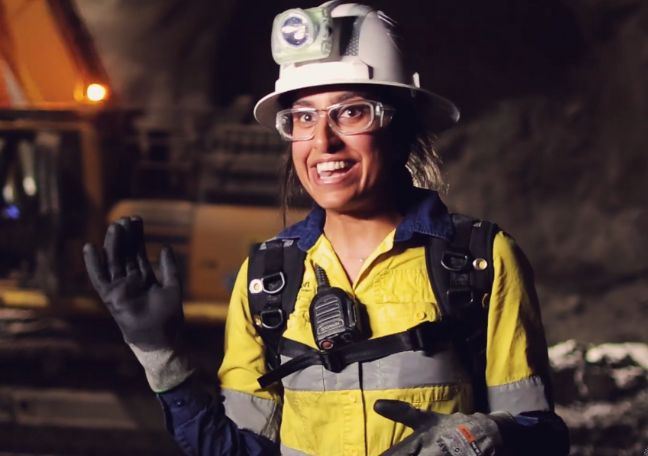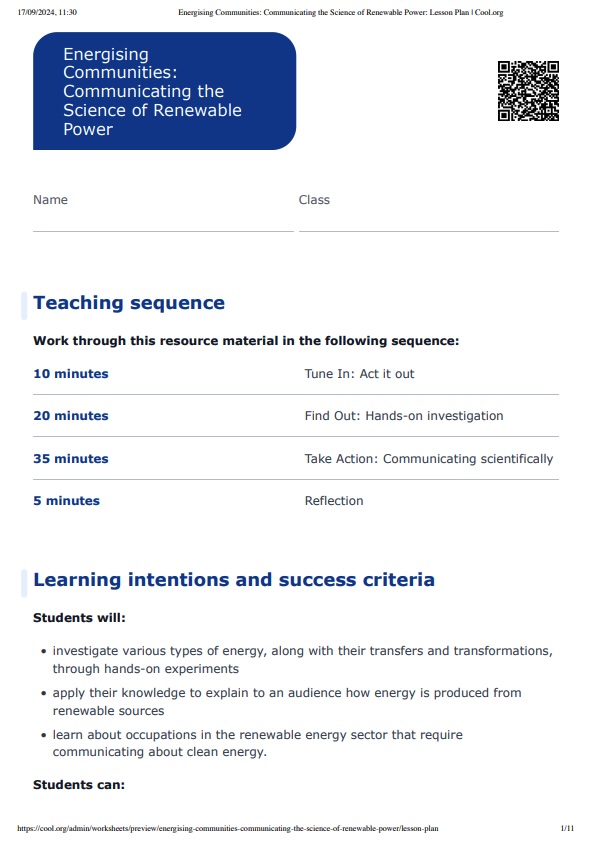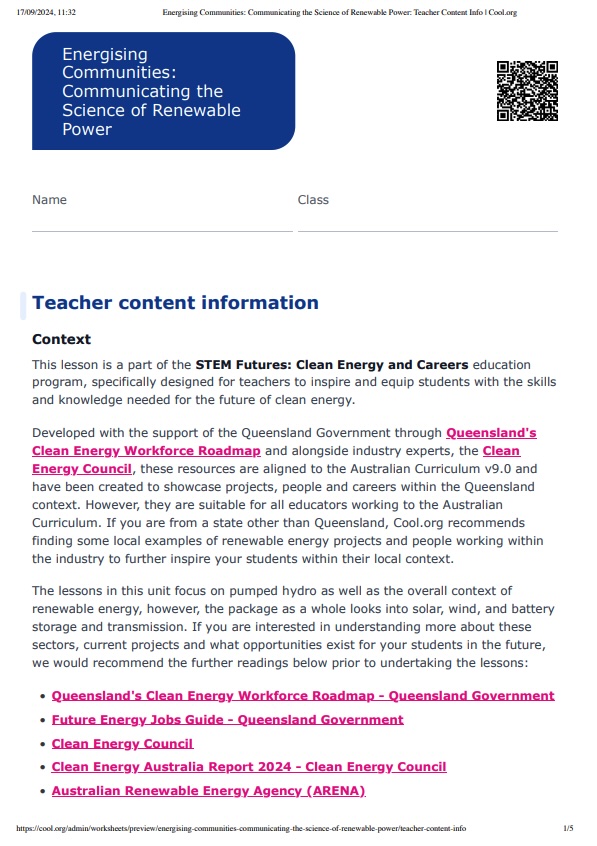Lesson summary
In this lesson, students will explore various types of energy, along with their transfers and transformations, through hands-on experiments. They will apply this knowledge to understand how energy is produced from sources like wind power, solar power, batteries and hydropower. Students will then learn about occupations in the renewable energy sector that involve liaising with communities and the wider public, and will use their understanding of renewable energy systems to create a science communication piece to explain how renewable energy is harnessed and its benefits to society and the environment.
Learning intentions:
Students will...
- investigate various types of energy, along with their transfers and transformations, through hands-on experiments
- apply their knowledge to explain to an audience how energy is produced from renewable sources
- learn about occupations in the renewable energy sector that require communicating about clean energy.
Success criteria:
Students can...
- classify various types of energy in renewable energy systems, such as solar, batteries, wind and hydro, and describe the energy transfers and transformations occurring in each system
- conduct experiments or demonstrations to observe and explain energy transfers and transformations in different renewable energy sources
- develop communication skills by applying their knowledge of renewable energy occupations and their understanding of renewable energy systems to inform an audience about how renewable energy is harnessed and its benefits to society and the environment.
Lesson guides and printables
Curriculum links
Select your curriculum from the options below.
Lesson details
Skills
This lesson is designed to build students’ competencies in the following skills:
- creative thinking
- collaboration
- communication
- curiosity
- problem-solving
- prototyping
- reflection
- social skills
Curriculum Mapping
Australian Curriculum (v9.0) content description: Year 8, Physical Sciences
Students learn to:
- classify different types of energy as kinetic or potential and investigate energy transfer and transformations in simple systems (AC9S8U05).
Relevant parts of Year 8 achievement standards: Students will compare different forms of energy and represent the transfer and transformation of energy in simple systems.
NSW Syllabus outcomes:
- describes the effects of forces in everyday contexts (SC4-FOR-01)
General capabilities: Critical and Creative Thinking, Digital Literacy, Personal and Social Capability
Cross-curriculum priority: Sustainability
Level of teacher scaffolding: Medium: facilitate class discussion, group work and individual research.
UN Sustainable Development Goals
UN SDG 7: Ensure access to affordable, reliable, sustainable and modern energy for all
- Target 7.1: By 2030, ensure universal access to affordable, reliable and modern energy services.
- Target 7.2: By 2030, increase substantially the share of renewable energy in the global energy mix.
- Target 7.3: By 2030, double the global rate of improvement in energy efficiency.
Resources Required
- Device capable of displaying audiovisual material
- Optional: batteries, wires, light globes (if available, small solar panels, turbines and fans)
- Optional: items to demonstrate energy conversion (hand crank torch, wind-up toy, etc)
Additional Info
This lesson has been developed in partnership with the Queensland Government through Queensland's Clean Energy Workforce Roadmap. Cool.org would like to acknowledge and express our gratitude to the Clean Energy Council for the expertise and advice provided in creating these resources.
Related Professional Learning
STEM Professional Learning Pathway
Quick summary: Enhance your practice with Cool.org's STEM Professional Learning Pathway. This year-long plan is designed to build your skills and capabilities in teaching STEM, ultimately transforming you into a STEM Innovator. The pathway will prepare you to integrate STEM education effectively, adapt to technological advancements and inspire students to succeed in a rapidly evolving world.





Welcome back!
Don't have an account yet?
Log in with:
Create your free Cool.org account.
Many of our resources are free, with an option to upgrade to Cool+ for premium content.
Already have an account?
Sign up with:
By signing up you accept Cool.org's Terms and Conditions(Opens in new tab) and Privacy Policy(Opens in new tab).